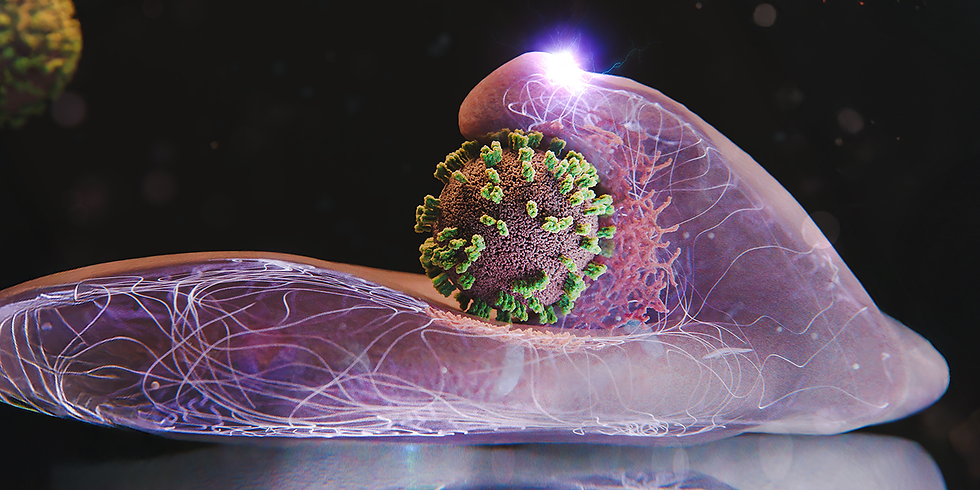European biomedical sector welcomes 2019 EU figures on animal research
- Bob Tolliday
- Jul 19, 2022
- 3 min read
Updated: Oct 5, 2022

The European Animal Research Association (EARA) has welcomed the publication of comprehensive statistics for 2019, from across the European Union (EU), on the use of animals in scientific, medical and veterinary research.
The headline figures in the European Commission report show that the total number of animals used in the EU in 2019 was 9,132,775 (similar to 2018 8,921,758). In 2019, 87% of the total were mice, fish and rats, whereas dogs, cats and monkeys account for just over 0.2% (2018 0.3%) of the total – those percentage figures also includes Norway.
The total is made up of animals used in basic and applied research, and regulatory studies aimed at ensuring the safety of medicines and other products, routine production and education and training.
EARA executive director, Kirk Leech, said: “All Covid-19 vaccines were developed and tested using animals and they are also essential for our understanding of diseases such as cancer and Alzheimer’s. These figures demonstrate that the biomedical community has nothing to hide about its research using animals and will continue to bring its benefits to patients across Europe.”
EARA, is the voice of the biomedical sector on issues relating to European animal research, working across Europe to promote greater openness and transparency. Currently, in the EU there are now Transparency Agreements in Belgium, France, Germany, Netherlands, Portugal, Spain, involving around 300 institutions, including universities, research facilities and pharmaceutical companies.
According to the EU statistics, the top three EU countries for animal use in 2019 were France 1,738,756 (2018 - 1,752,906), UK 1,681,383 (2018 - 1,749,901) and Germany 1,811,270 (2018 - 1,629,228).
Since supplying their figures to the EU, some countries, including Belgium, France, Germany, Netherlands, Spain, and UK have also published statistics for 2020 (see also EARA Animal Statistics tables and Notes to Editors below).
Separate figures were also produced to record the number of animals used for the creation and maintenance of genetically altered animal lines, across the EU-28 (plus Norway) in 2019 this was 1,208,305 (2018 - 1,520,791).
Most of the medicines we have come from animal research. Often science doesn’t need to use animals, but for many key questions they are crucial.
Animals are used alongside several other techniques such as cell cultures, human studies and computational models. These methods are used – often in tandem – to answer the key biological questions necessary to understand and treat disease. Before an animal model is selected, researchers must show that the knowledge could not be acquired using non-animal methods.
For further information contact EARA Communications Manager, Bob Tolliday btolliday@eara.eu on +44 (0)20 3355 3095 or +44 (0)77 1552 5535
End
Notes to the editor
Animal research is strictly regulated under the EU Directive 2010/63. Every procedure, from a simple blood test to major surgery, requires individual, establishment and project licences, as well as approval from animal welfare and ethical review bodies.
All organisations are committed to the ‘3Rs’ of replacement, reduction and refinement. This means avoiding or replacing the use of animals where possible; minimising the number of animals used per experiment and optimising the experience of the animals to improve animal welfare. However, as institutions expand and conduct more research, the total number of animals used can rise even if fewer animals are used per study.
Since 2013, it has been illegal to sell or import cosmetics anywhere in the EU where the finished product or its ingredients have been tested on animals.
Dogs can be used to test new drugs before clinical trials are conducted in humans, while monkeys are also used in drug testing and have played a significant role in research in AIDS and developing treatments for Parkinson’s disease, as well as the Covid-19 vaccine during the 2020-21 pandemic. Dogs are currently being used to develop treatments for Duchenne muscular dystrophy, a debilitating muscle wasting disease that has no cure and ultimately leads to early death.
Like humans, non-human primates (NHPs) have a prefrontal cortex, which is the part of the brain involved in cognitive behaviour. This means that NHPs can help scientists understand how the brain works and help us develop treatments for neurological conditions like Alzheimer’s, Parkinson’s and OCD.
About EARA
The European Animal Research Association (EARA) is an organisation that communicates and advocates on biomedical research using animals and provides accurate, evidence-based information. It has 135 member organisations, including private and public research bodies, universities, regional and national biomedical associations and suppliers, across 21 European countries and 28 in total across the globe.
End



